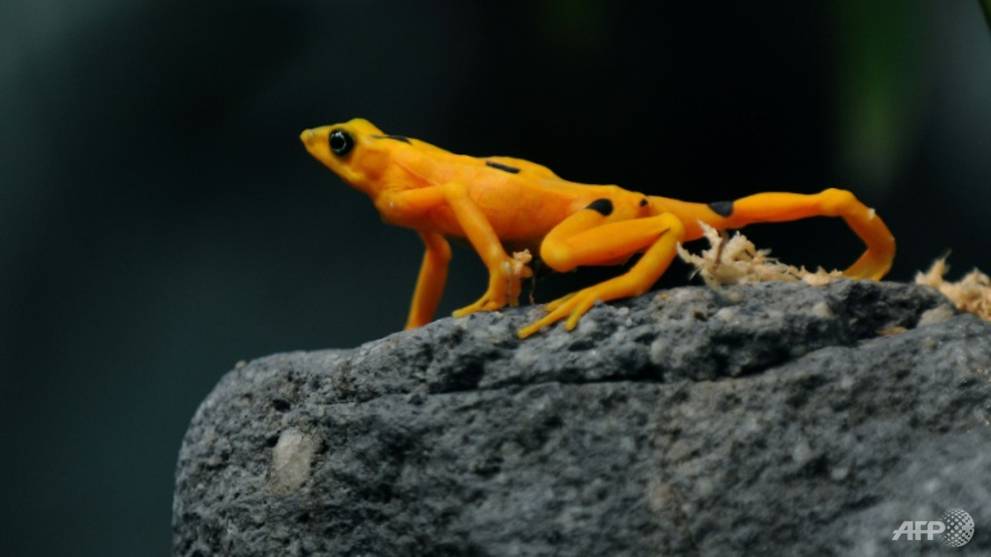
PANAMA CITY: Cocooned from the outside world, some 200 critically endangered golden frogs are living a sheltered existence in Panama, protected from a devastating fungus that threatens to wipe out a third of the country's amphibian species – a situation scientists describe as "critical."
The frogs, which are yellow or gold with black spots, enjoy a controlled environment inside fish tanks installed at the Smithsonian Tropical Research Institute (STRI), a 465 sq m facility in Gamboa, north of Panama City.
Advertisement
Advertisement
Though endemic to the lush Central American country, no Panamanian golden frog can be seen in its natural habitat, threatened as it is by a so-called "superfungus" that has decimated amphibians in the wild.
According to a report by the World Wildlife Fund (WWF) published this week, the planet has lost more than two-thirds of its vertebrates in less than 50 years.
The situation is especially dire in the tropical areas of Central and South America, where the extent of loss is pegged at 94 per cent.
Believed extinct in the wild, only about 1,500 of the tiny Panamanian golden frogs are found in zoos where they can reproduce.
Advertisement
Advertisement
But it is not only frogs that are vulnerable to the fungus. Toads, salamanders and caecilians – limbless amphibians similar to snakes – are also at risk.
"In Panama, we can say that about a third of the 225 species of amphibians are threatened in some way," said STRI researcher Roberto Ibanez.
Gina Della Togna, a specialist in molecular and cellular biology at the University of Maryland, described the situation as "critical."
"SUPERFUNGUS"
The biggest threat posed to amphibians is chytrid fungus, which spreads through water.
The pathogen is responsible for chytridiomycosis, an infectious disease that scientists say has already caused the disappearance of some 30 species.
The fungus becomes embedded in the animal's skin and infects it, causing it to be unable to exchange salts and water with the environment.
The disease causes irreparable damage to vital functions. Eventually the animal dies of heart failure caused by asphyxiation.
"It's a pretty dramatic and painful disease," said Angie Estrada, a biologist at Virginia Tech University and administrator of Panama's Summit Park.
"When the fungus gets to a place where it wasn't, it affects populations very much and animals die en masse. It causes certain death in the individuals it infects. It's a devastating phenomenon," said Della Togna.
The microorganism was first detected in the 20th century in the Korean Peninsula and scientists warn that it has already spread throughout the world.
"Anywhere in the world where there are amphibians, the fungus is already there," said Estrada.
It arrived in Panama in the early 1990s and has been wreaking havoc ever since.
"It's a superfungus that can even affect other species that are not amphibians," according to Ibanez.
He warned that deforestation, environmental destruction and pollution of streRead More – Source
[contf] [contfnew] 
channel news asia
[contfnewc] [contfnewc]







